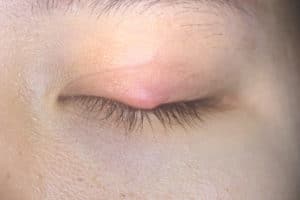
Symptoms of Orbital Cellulitis
- Pain in or around the eye
- Discharge from the eye or nose
- Nasal tenderness
- Fever Headache
- Swelling of the eye area
- Inflammation and redness
- Inability to open the eye
- Trouble moving the eye due to pain
- Double vision
- Protruding eye, also called proptosis
- Vision loss or impaired vision
Causes Of Orbital Cellulitis
This infection within the orbit around the eye is usually the result of a bacterial infection elsewhere, such as the sinuses. Streptococcus and Staphylococcus aureus (“staph”) are the two most common bacterium associated with orbital cellulitis. It should be noted that children are more susceptible to this infection. Younger children may be affected by one type of bacteria. Older children and adults who develop orbital cellulitis may be affected by multiple strains of bacteria at once. This can pose a challenge to diagnosis and treatment. In addition to bacterial sinus infection, conditions such as animal or bug bites, wounds, or even eyebrow waxing or a tooth infection could be the origin of orbital cellulitis.
Diagnosis and Treatment
An experienced physician may form a loose diagnosis via a physical examination of the eye and thorough consultation. The doctor may also order diagnostic imaging to confirm the diagnosis. While orbital cellulitis can be a painful infection to endure, doctors do not rush to surgery to correct the condition. In most cases, a course of antibiotics is prescribed first. In more severe cases, the patient may require hospitalization and IV antibiotics. Surgery may be considered if the eye does not improve with antibiotics. In this instance, a minor procedure may be performed to drain fluid from the area, and a culture performed to gain more information regarding the microorganisms involved in the infection.
Don’t let an eye infection threaten your vision or livelihood. If you or your doctor suspects that you have orbital cellulitis, contact us. Dr. Fante provides professional, friendly care in our comfortable Denver office. Call (303) 839-1616 today.

